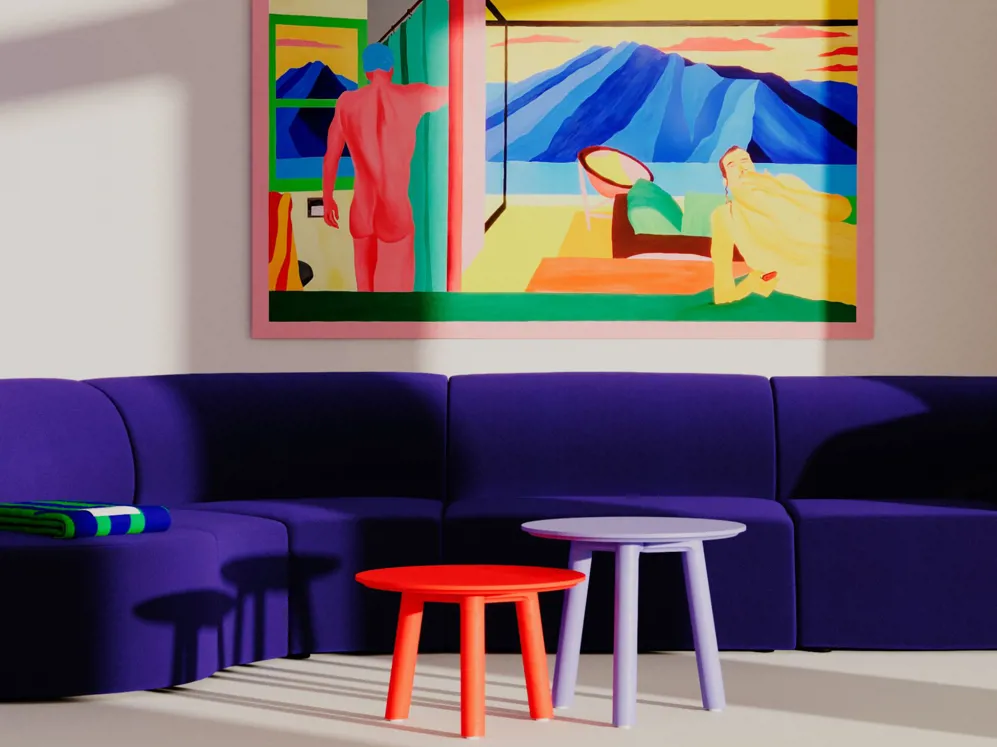
Words Vidula KotianImages Anne Deppe, Fritz Buziek, and Sander SharinaDate 20 December 2023
If Berlin was a design piece, what would it look like? It’s a question that Christoph Steiger, David Wendt, and Reinhard Wessling set out to visualize with their brand Objekte Unserer Tage (Objects of Our Days). Their bold, colorful pieces of playful furniture in lilac, Berlin blue, apricot, and scarlet represent the city’s multicultural cosmos and its penchant for hedonism.
The brand is also about “creating a space for a self-determined generation.” This means products that are meant to last, manufactured sustainably and fairly in Germany. OUT works exclusively with family-run master and craft businesses, having traversed the width and breadth of the country to find the right partners to work with. We had a chat with Wessling about democratic design, finding suppliers who take a leap of faith with you, and how sometimes the party scene in Berlin can change your life.
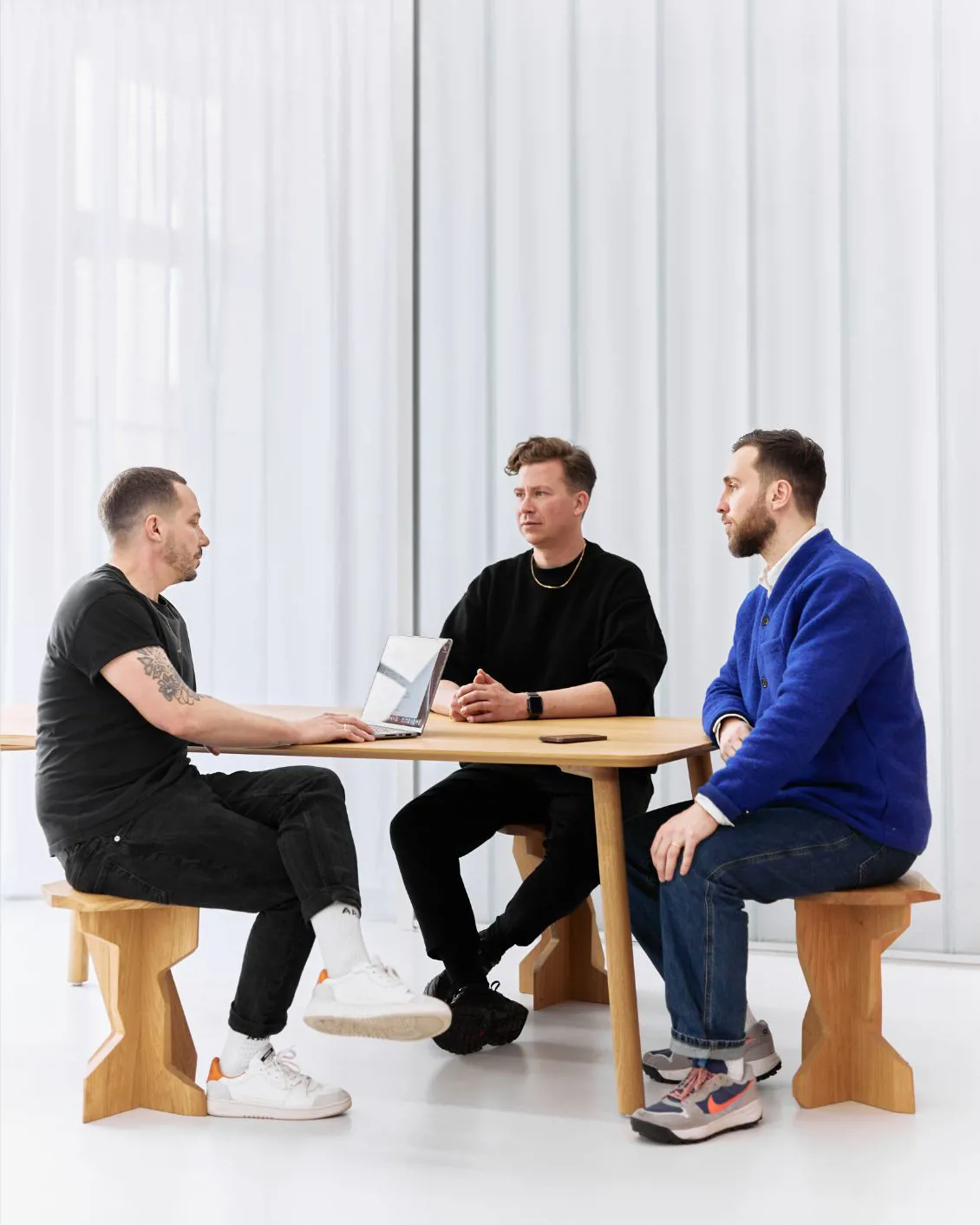
David, Christoph, and Reinhard at the OUT studio
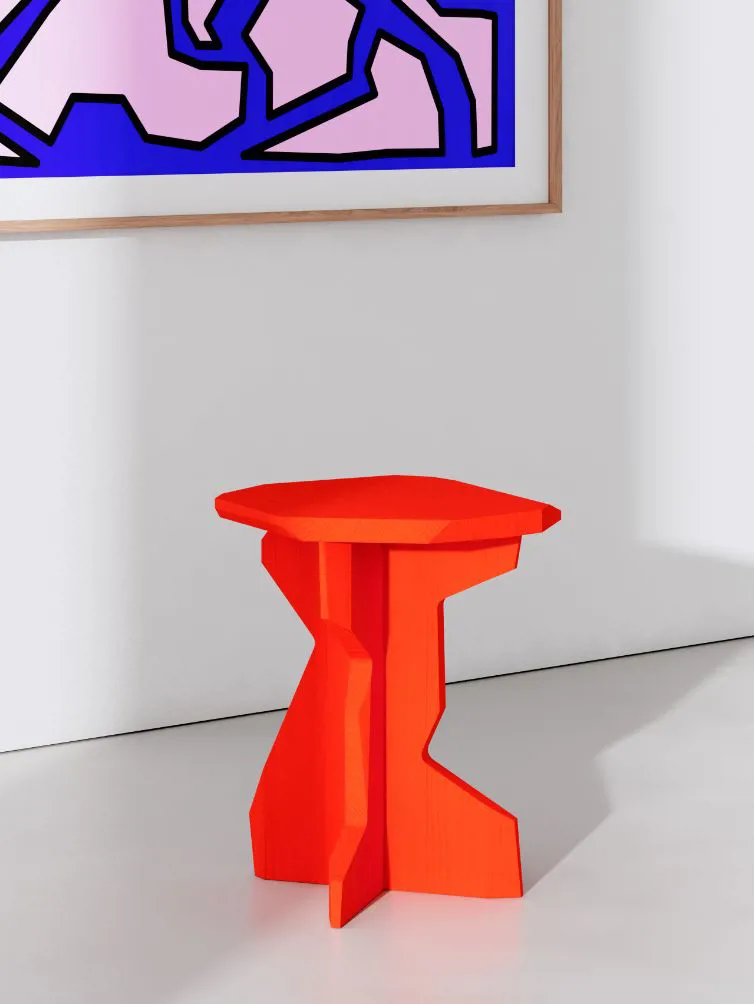
Fels Stool is a sculptural piece carved out of solid ash wood
I moved to Berlin when I was 18 and have lived here for 15 years now. I’m originally from the north of Germany, a town called Osnabrueck. When I moved to Berlin, I didn’t have a job and I didn’t study. I just went out and met a lot of people. I met one of my partners at OUT, Christoph Steiger during this time at the club Berghain. It’s a bit embarrassing to admit it now but back then it was cool. I did culture studies and English literature and then ended up at OUT.
Not at all, but the culture studies are useful in our field because we create objects that have a cultural value. We not only make consumer goods, but objects with emotional and practical value. We try to create products that will stay with you for a while.
All three of us are involved as we are a small company. No one holds back. We fight about everything so it’s a very lively environment. David Wendt is our head of design, but Christoph and I are also involved in the process. We give our input about which aspects of the design we love, what we would like to see, a gap in the market we could fill, or a color we love. Our design process is a community process. We create together as a team.
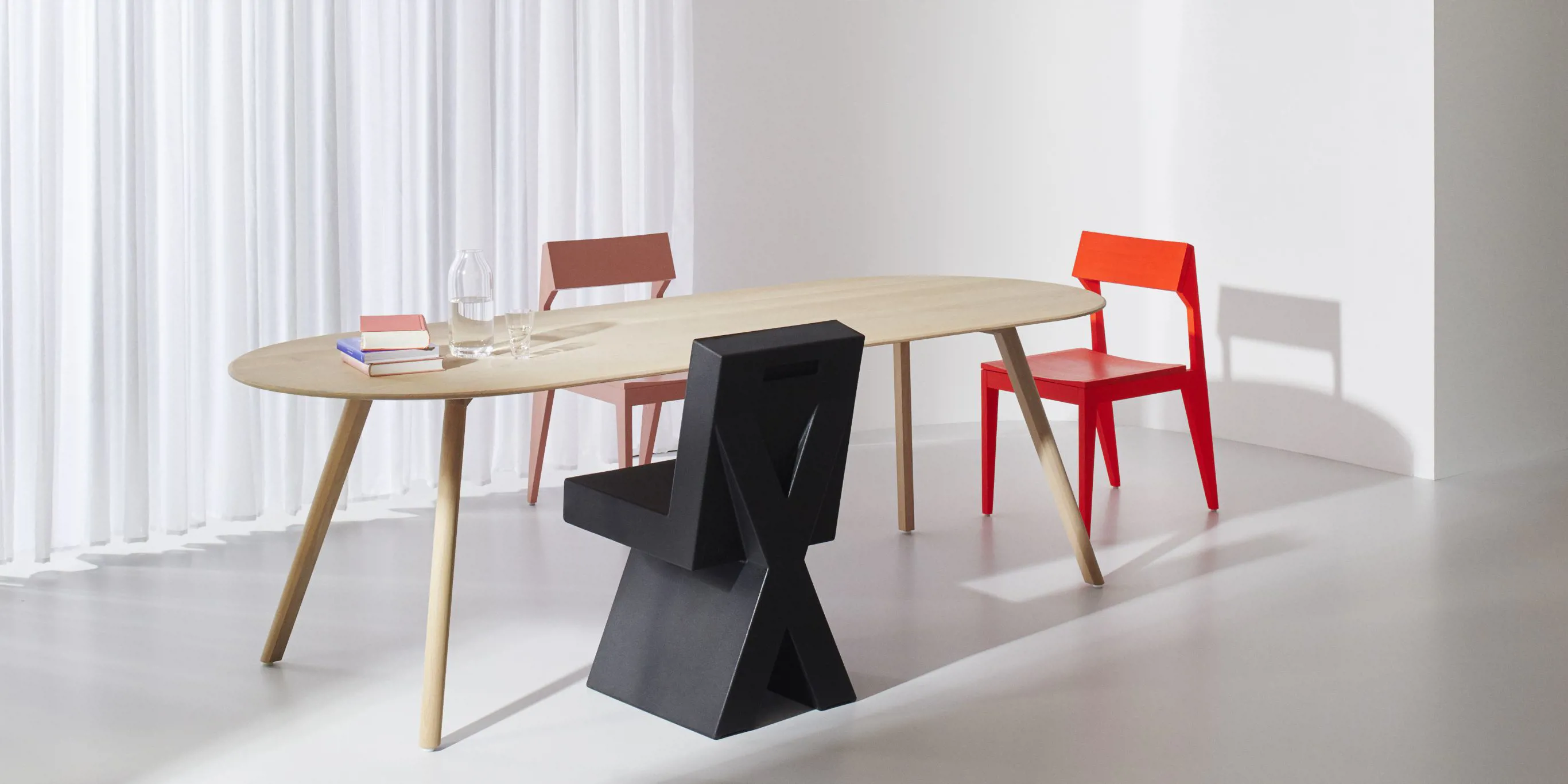
Meyer rounded table with X and Schulz chairs
At the beginning, we just wanted to be able to deliver all kinds of furniture to fill a house. Slowly we reached that goal. Now we go into the details. So, we don’t have just chairs but different types. Maybe you love wooden chairs like the Schultz, which is a reinterpretation of a classic. Or maybe you want to have dining chairs with upholstery because you love fine dining. You want to sit at home like you would in a restaurant, so we developed the Wagner, which is fully upholstered. We’re spreading out the branches of the collection to fulfil more specific needs. Even with the sofas, we have all-rounders made for all types of situations and then we have a chill sofas, such as the Sander which is made for lounging. When you come home from a day at work, you can just fall asleep on it. We make furniture because it’s what we want but it’s also data-driven where we feel like there’s a gap.
Customers come to us with ideas, too. We sometimes change the designs based on feedback. We produce in Germany through family-owned businesses and can customize quickly. Right now the trend is sunken living rooms so we often measure the sofas to fit these sunken areas.
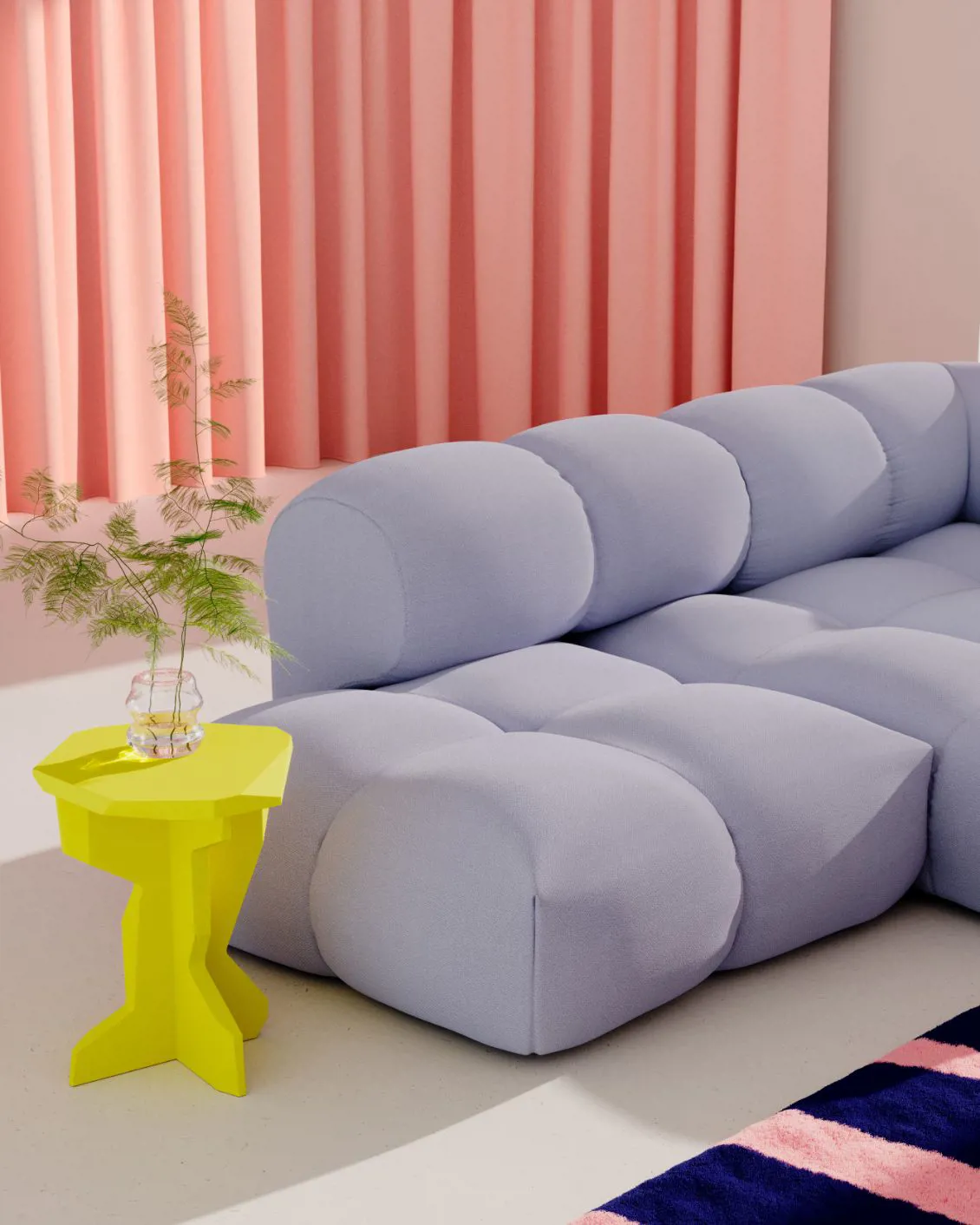
Sander sofa with the Fels Stool
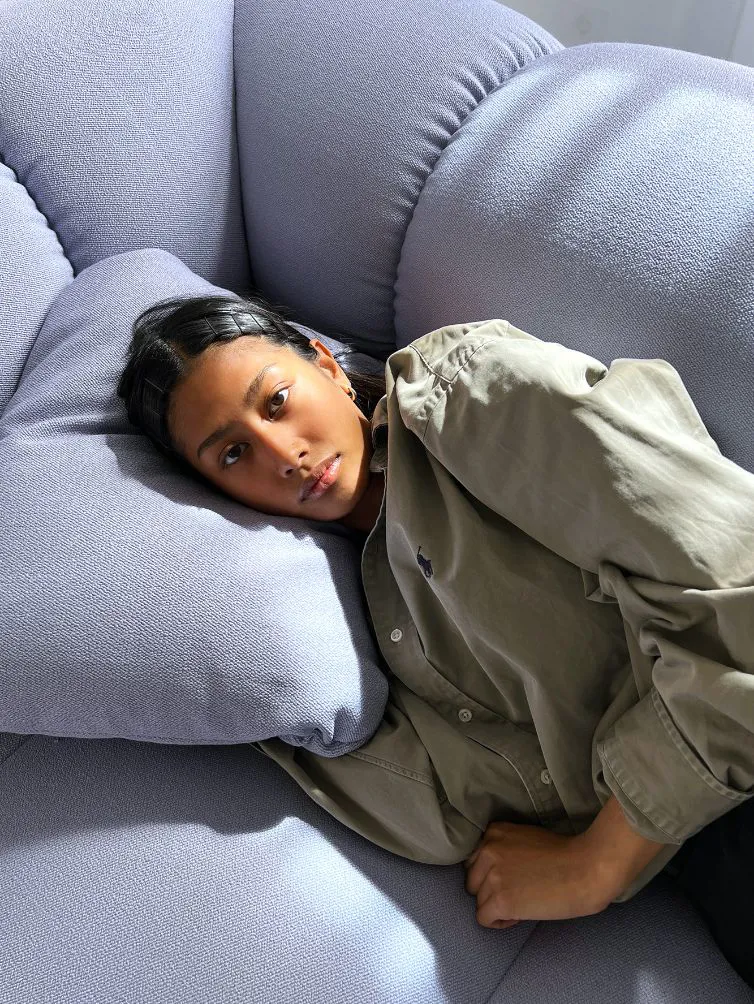
The sofa comes in many shades including lilac blue
We felt there is no German design brand that is known outside of the country. There are a lot of Scandinavian and Italian brands. We were sitting in dark gray Berlin and the idea for OUT was to create something colorful and unique that reflects Berlin but also German design. We felt that the industry was focused on throw away culture. Back then, consumers would go to Zara or IKEA and everything was built to last for two or three years. We felt the future wouldn’t be about this waste culture, but to create objects that have value and permanence. A big focus for us is solid wood tables because you can refinish them again and again. They will stay with you for generations. We wanted to change the way the industry works because, just like travel and fashion, the interior field is dominated by big players. You think you’re shopping different brands, but actually it’s all the same. For instance, H&M, Arket, and & Other Stories all belong to the same brand. A lot of brands are owned by big corporations, but OUT is like a small sailboat moving in front of a very big wave, trying to be agile, and somehow navigating what’s happening globally.
We feel Berlin is more vibrant and colorful than other German cities and the colors in our collection reflect that. Christoph and I met in Berlin and went out partying, so every object is a bit playful. We met David here as well. We all grew up in Berlin, having moved here when we were very young. Also, we design everything in our studio in Kreuzberg.

The production is in Bavaria because historically, it is the best area. For each discipline, such as the sofa or wooden tables, we work with one family. These traditional family-owned businesses were dying out in Germany even though they're the backbone of our economy. We wanted to work with partners who already have the expertise. For wood, we work with Daniela. She’s a tough woman in her 50s and can stand up to anyone. We’ve been through a lot—Covid was tough and we had supply chain issues. We went through hell and back, but we always stuck together. Now our brand is continuously growing because consumer behavior is changing. They are longing for objects that hold their value.
That’s an interesting story. It was the toughest part of it all. David put some plans and wood in the trunk of his car and drove all around Germany trying to find producers who would work for us but 99% said no because we were too small, too colorful, or too crazy. They were not interested because it was a gamble. They would need to invest in us because as a producer you incur certain costs up front. If we order a chair with you then you need to order the wood. Some would not even be able or willing to take the risk. In the case of Daniela, she took us on but that was more the exception than the rule. We were so lucky to find open-minded family-owned businesses who were able to accommodate us.
First of all, our furniture is produced in Germany with strict rules for workers and the environment. For example, one of the families has a small river running next to their business and they must take care of the fish. They are also engaged in their community as volunteer fire workers...all these things you do as a company here that are pretty unique. The German certificates have a high standard in comparison to other places. Let’s hope it stays that way. We try to design objects that have aesthetic value, but they aren’t screaming at you. If we use vibrant colors, then the design is more restrained. We try to find a balance between interesting and timeless, which is quite hard to do. We also design things that can be repaired.
OUT combines expertise built up over generations with the latest technological innovations
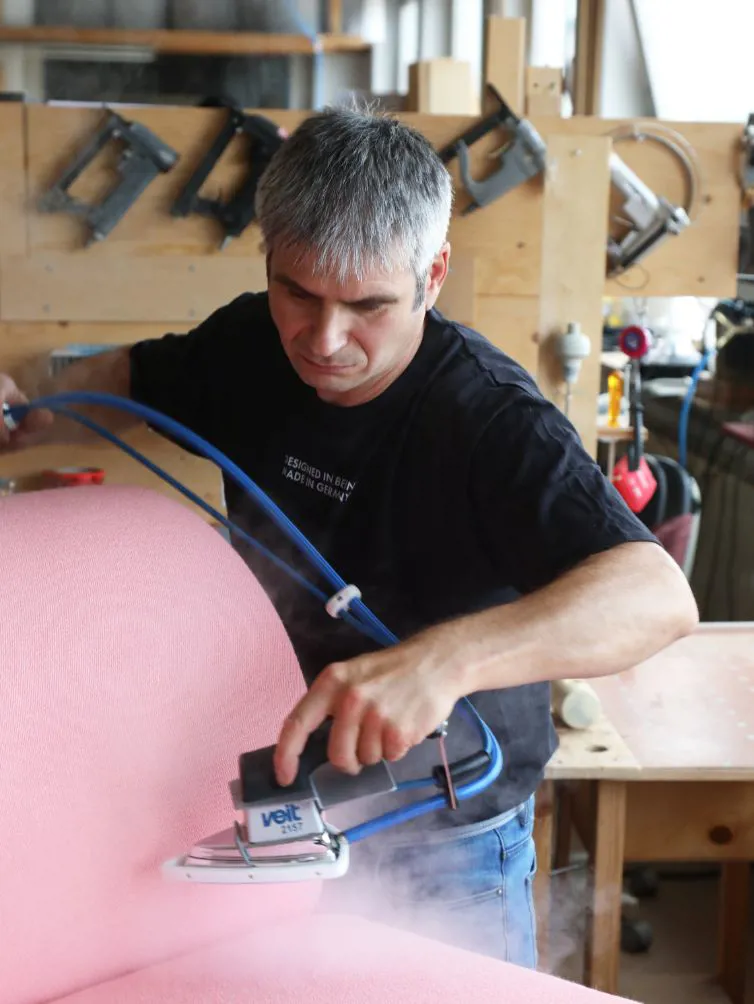
OUT works with family-run master and craft businesses
The colors come into our lives by chance. The apricot we have was inspired by bags from Acne Studio. Many years ago, someone brought the bag to the studio, and we knew we wanted to use the color. The lilac we use was inspired by a Netflix series, “The Assassination of Gianni Versace,” set in Miami. We see something and we incorporate it. It’s mostly personal—one of us gets an idea from a show or something happening in Berlin. We’re now planning an outdoor collection with flamingo.
We are planning a collection made of light local steel and produced in Germany. We plan to have chairs and tables made of base pipes. It will be affordable, in our world at least, and will be in a similar price range to “Hay Palissade”. The idea is to have a collection that will endure all kinds of weather and last forever.
We are using powder coating which is also used for buildings so it should be fine. The collection came about because David is moving from Berlin to Brandenburg. He’s at that age and he needed outdoor collection for his garden. So, you see when we design something, it’s personal.

Meyer color round table with a fine ash grain
Again, it’s about connections in Berlin. My husband lived here on Friedrichstrasse and we would run into his friend who is a chef. That’s how we came across this space and we liked it immediately because the space is unique in its scale. And the location is exactly everything we ever wanted. Before that, we were in Mitte at Haus des Reisens, but Alexanderplatz feels like a no-man’s land. In Kreuzberg where we’re located now, it feels like a nice community because we know everyone in the house. We have a grandma who lives above us, and she drops by. When we have events, we invite our neighbors. We support each other when something happens. Even though we are business, the neighbors are super friendly and happy we are here.
Surprisingly not that much. What’s cool about Berlin is that there’s so much creative energy and a lot of local designers and artists who bring a vibrant diversity to the city. I think that has been there forever and I hope it’s going to stay. We’re not like the Scandinavians who create global design brands and dominate the market. Here it still feels small and innocent. We have a lot of small design happenings—it’s the curse and the beauty of Berlin that there is this diversity and smallness.
We are quite impressed by the Berlin natural wine scene. We just went for dinner with natural wine producers Sips. Also, Studio Linné creates flower design but on the next level. They rethink how to use flowers as art rather than decoration and that’s pretty cool.
We also really enjoy the collaborations we have with shops in London or Sydney. They give us such interesting feedback on our products. In Seoul, they ask if we can make the sofa shorter because apartments there are not as big as in European countries. Some London clients are crazy about fluffiness. All this feedback from other places makes our life more fun.
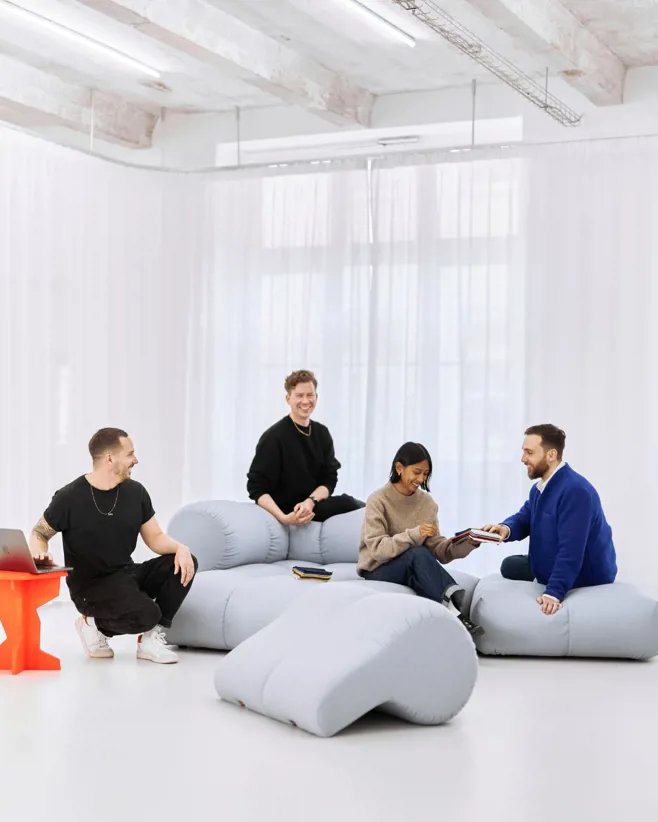
The shorter sofas we only do in Asia. The Chinese like to order our most wild stuff, like the Novak table, which looks like a spaceship. The Germans love their solid wooden tables. We see a big difference in local tastes, but I feel what unifies all of our clients is that, at some point in life, perhaps they visited Berlin and wanted to bring a bit of this fun craziness home. We are the only ones from Berlin who can deliver that.
We are obsessed with soft fluffy sofas. The Sander sofa, which we launched this year, is our biggest success so far. We’re going to do another super soft sofa because people are into it at the moment. The new outdoor collection that I mentioned will be the biggest thing because it’s a completely new area for us.

Fluffy sofas are a big trend for 2024
Hand-sewn and -uphostered sofas made in Germany